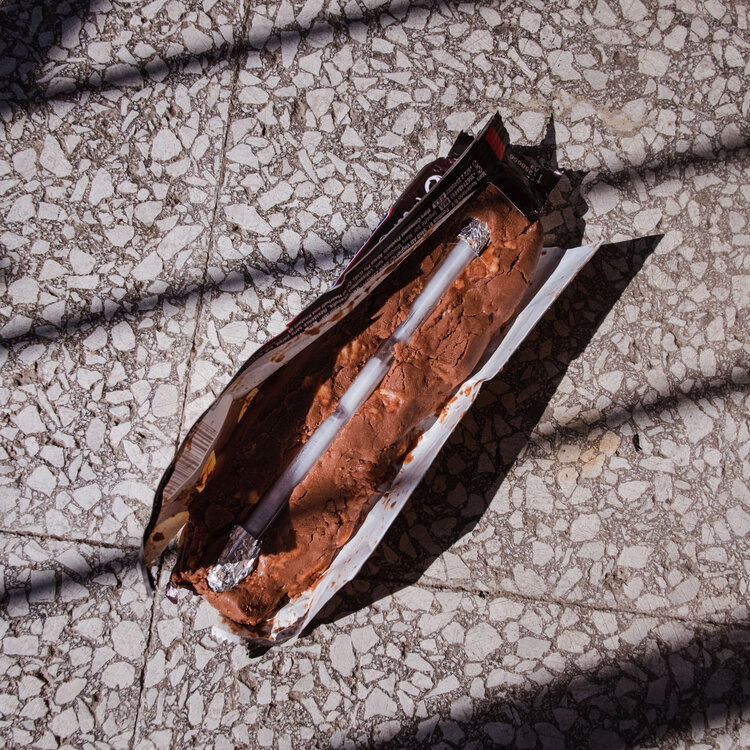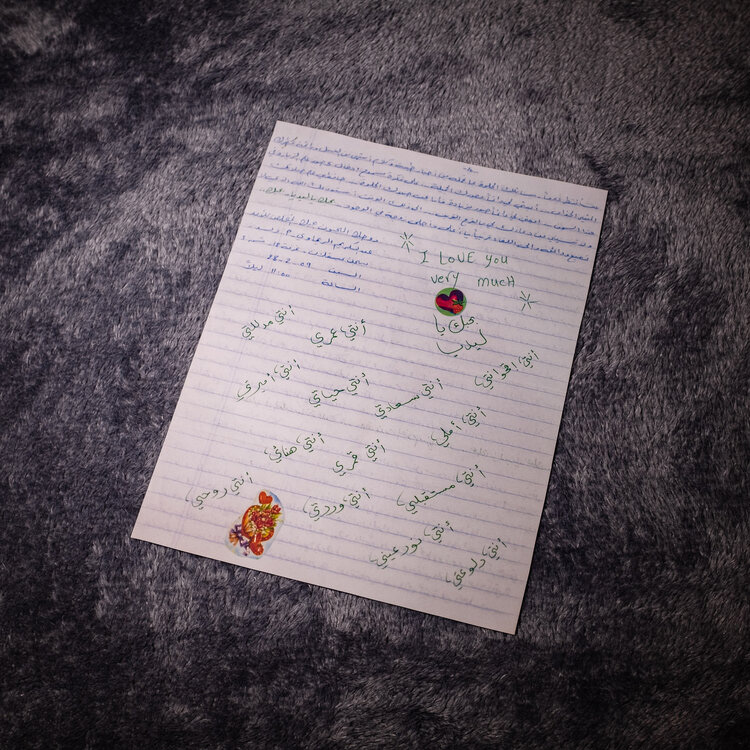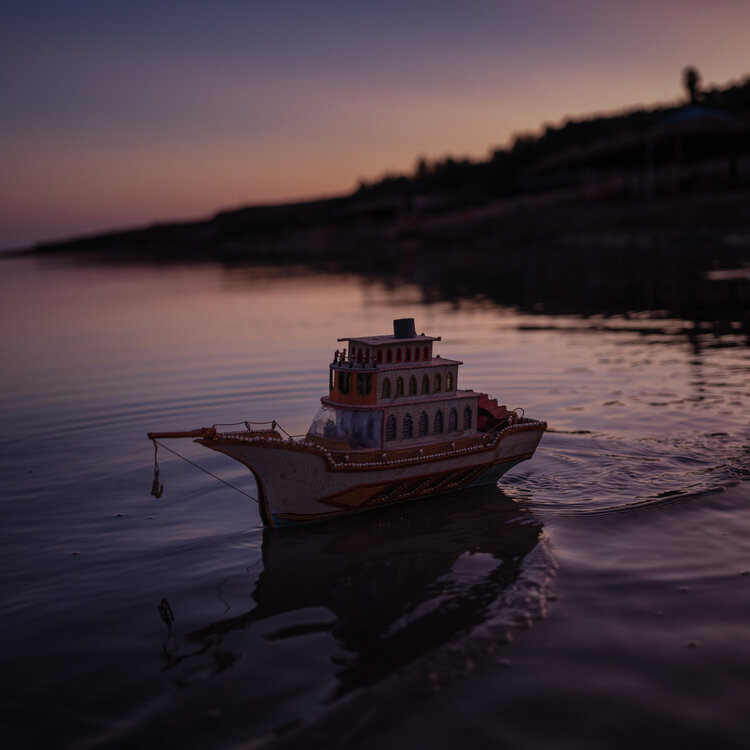An interview with the Italian photographer, winner of the World Press Photo Story of the Year 2021.

Italian perspectives #3. Antonio Faccilongo

Antonio Faccilongo is an Italian documentary photographer and filmmaker. After graduating in communication sciences and photojournalism, he focused his attention on Asia and the Middle East, covering social, political and cultural issues. He is one of the winning Italian photographers of the World Press Photo 2021, with a project on contemporary Palestine.
edited by Maria Teresa De Palma
After receiving the 2020 FotoEvidence Book Award, the ‘Habibi’ project won first prize at the World Press Photo 2021, in the ‘Story of the Year’ section. ‘Habibi’ is a project that began years ago, and has also been made into a photo book, which tells the story of Palestinian women, the wives of political prisoners who are serving long-term sentences in Israeli prisons, who resort to smuggling semen in order to conceive children. A chronicle of painful love, set in contemporary Palestine. How does recognition of this kind affect your work as a photographer and your profession as a photojournalist in general? Can you tell us how these projects began?
It is not an easy question to answer and it takes me right to the intimate conception of my works. Telling the story of ‘Habibi’ was effectively a personal need, created by a powerful, intense experience, which drove me and in some ways forced me, at some point, to continue following the things that went on in that area. In 2008, when I first went there, I was still covering local news, working for a Rome newspaper called ‘Il Messaggero’. So, I didn’t make the trip originally for professional reasons, but for humanitarian purposes, in an area traditionally marred by difficulties and conflicts. In fact, at the time, the local population was facing a period of great tension, following the relative stability that had been achieved after the second intifada. Seeing and experiencing the conflict so closely, with no filter, is something that had a tremendous emotional impact on me at the time. It was an experience that affected me more than any of the accolades that came later. The competitions and awards came about as a result of certain choices, more or less lucky, more or less right: but at the root of the project, there was above all else the human need to understand these people. Women and children who, after the war, found themselves having to live without fathers, children or husbands – fundamental figures not least because they were often responsible for material support and the only source of income for the family. At that time, I had read a statistic, perhaps exaggerated, but which nevertheless had a fundamental bearing on my research, which stated that around 40% of the men who were in the refugee camps had been arrested. It was then that I asked myself what was happening, from a human point of view, to these families. The competitions came later. I have never thought of producing images to indulge certain publishing practices, or to pander to international awards. On the contrary, in this work I have tried to express myself using very personal language, which does not fully comply with the standards of photojournalism – starting, for example, with the square format that I chose. Yet the work enjoyed and continues to enjoy very broad circulation, as if the very fact that I opted for a new language and ignored certain standards actually add value. ‘Habibi’ seeks to provide a different view of a region that is often only seen from a single perspective, which reduces or translates the events related and the cultures involved into a single narrative. This was a peculiar choice, and it is perhaps why the story proved so successful, both in publications and in competitions. In any case, it is a story that truly came about for very personal reasons, and which I then followed attentively and consistently over the years. Quite naturally, this was the story that I focused by attention on over the years, and that I sought to promote at editorial level, making it my flag, if you like – and trying from time to time to update it, adding nuances, and focusing on a tone that was not purely descriptive, but instead evoked the elements that I believed to be most important.
Recently, you were also among those selected for the ‘National Geographic Society Covid-19 Emergency Fund’ with the ‘All for Love’ project. This work is still in the planning stage and focuses on the difficulties encountered by pregnant mothers during the ongoing pandemic crisis. Can you tell us more about this work? What does it mean, from a technical and human perspective, to plan and construct a long story in images? What methods and criteria were used to select and assemble the collected material?
I will start with ‘All for Love’ and the type of photography that has attempted to tell the story of the pandemic throughout these months. The Covid-19 crisis is an event of paramount importance, which truly has affected and continues to affect the entire planet, but which has often resulted in photographic projects far removed from my own inclinations. Like everyone else, I experienced the health situation of recent months with great concern, trying to keep my movements to a minimum – and looking with little interest at the visual projects that came about. Photographic practice and reflection on Covid then evolved for the better, but for a long time I continued to feel uninvolved, despite the fact that I felt the weight of the restrictions and the responsibility to acknowledge and bear witness to a story that is at the centre of our experience. So I started looking for something, following the same approach I chose for the war zones. That is, I wanted to focus my attention not on the ‘front line’, but on everything that goes on behind it in some way. As in the case of my reportages in conflict zones, I chose not to tell the story of the war directly, but the consequences it had on the local population. It was a matter of applying the same approach, focusing attention on the psychological consequences that a crisis such as Covid-19 can have on people. I then read a study produced by the La Sapienza University of Rome, according to which perinatal mortality in Italy has increased significantly: in Lazio alone, the number had increased by 3.5 times in the year of the pandemic; in England, the increase was 5 times, and 100 in India. Incidentally, this increase is not directly linked to the virus, but to other factors, such as the lack of medical care or the build-up of physical and psychological stress we suffer as a result of the pandemic, and which often has irremediable consequences during pregnancy. This is how the project I am working on for the National Geographic came about, and an example of how I generally come to choose my stories. In recent years, I have become increasingly aware of the importance of focusing on personal stories and projects, over and above the interests of clients – newspapers, foundations or non-governmental organizations. At the centre of my stories, there is always an emotional factor, and my intention is always to tell my own story through the stories of others. ‘Habibi’, the story that won this year’s World Press Photo, was fundamental for me in the evolution of my language: it allowed me to understand that in order to express myself at a certain level and ultimately to be satisfied with my work, I have to adopt a whole series of elements capable of conveying emotions and atmospheres. In addition to the purely factual image, I need to imagine portraits and scenarios which are able to convey an emotion to the viewer. In my personal projects, this is an element that is an absolute must: I invest time and energy in a long-term project only if I can identify this key, and they are always stories that tend to be unknown, or are able to shed light on little-known aspects and nuances of situations that have already been described. The emotions of the people in these stories are central. It is a sort of romanticism: I realized that without this element, without this type of emotional approach, I would not be able to produce work of quality, or reach certain levels of intensity or expressive depth.
In fact, when you look at the photos in ‘Habibi’, you immediately realize that you have chosen an approach that is pretty far removed from how we are used to interpreting visually a region associated with war, with conflict. That is, you opted for a different perspective. In recent years, photojournalism has also undergone an internal evolution of its own modes of expression, breaking away from the paradigms of naturalistic narration and pursuing new methods – sometimes staged-directed, as in the case of Gabriele Galimberti, and sometimes emotional, as in your case.
As with all small or big changes, this anticipates and in some ways already has anticipated the ushering in of a new line of research, one that is often in stark contrast with more traditional approaches and styles. However, I personally do not perceive or share this kind of contrast. It’s true: perhaps I find it more interesting to look at works like those by Antoine d’Agatà, who told the story of the Covid-19 pandemic in ways that were closer to artistic photography than to documentary photography. In his project, ‘Virus’, the images were taken using a thermal imaging system, which meant the subjects photographed were portrayed as patches of colour, red or orange, in a colder blue world. It is a work that I can’t imagine being published in Time magazine, for example, because it is far from the type of direct communication that type of magazine is looking for. Yet it is a type of documentation that I find more interesting, for my personal taste and inclination: a visual approach that provokes reflections and questions. At the same time, I consider more traditional projects, such as the reportages on the events in Codogno, to be equally important: they are both languages capable of telling the story, both worthy of attention and space. If we then focus our attention on the award system, it is interesting to note that the World Press Photo already tried, ten years ago, to encourage new forms of experimentation. Take for example the work of Pietro Masturzo, who chose in 2010 a completely new perspective to narrate the presidential elections in Iran, once again focusing attention not on direct shots of facts and events, but on an ideal ‘second line’. There were then a series of other efforts, following on from that edition of World Press, which actually lead to a regression, to an impoverishment of languages, and to the overstepping of a certain ethical limit that photojournalism should always set itself – that of being based on an implicit pact between author and spectator.
Still on ‘Habibi’, and on the stylistic approach adopted: in this work, it is often things, at times quite unrelated to the context, caught in their pure essence as an object, that do the talking; an almost choice almost of modesty, which captures the atmosphere of general suspension that you can sense in the reportage. It is a unique angle, even compared to one of your previous projects, ‘Single Woman’, which depicted the same places, the same themes, but in a way closer to the canons of portrait photography. Can you tell us about it briefly?
There is a fundamental factor that differentiates ‘Single Woman’ from ‘Habibi’: my improved knowledge of the local context and culture. Knowing and understanding the culture of the place where you are working allows you to see and grasp new subtleties of meaning. It was this understanding, this greater knowledge, that led me to ask how I could convey these subtleties, these finer elements, to viewers interested in the subject. Take, for example, the image of the little boat placed on the waters of the Dead Sea, a boat built by one of the prisoners whose story I am telling. It is a deliberately allusive image, the sort of vision that viewers usually either appreciate or reject, with no middle ground. ‘Habibi’ is a work built entirely on few real elements, and on many invisible elements, such as the still life I’m talking about. I used this to portray absence, the presence of absence, the melancholy, the sense of nostalgia, and at the same time the dignity, the hope for the future, the positivity that children born in similar, very difficult situations, can bring. The boat is one of the most powerful symbols in the Koran: an element that serves precisely to bridge the distance between two people who care for one other, between two lovers. Prisoners make them with the waste materials they can find in prison, such as snack boxes, recycling small parts of them. They then give these boats to their families, sending out a strong message of hope: we will come back, our hearts are united. Including this sort of still life was therefore a way of narrating aspects that would otherwise have remained purely as traces, existing only in my memory. Instead, I wanted these elements instead to be transmitted, communicated, with the same delicacy and modesty with which I had encountered them. I made a specific choice: to build a narrative centred around love, which was also a way of seeking to overcome certain barriers of cultural resistance, or stereotypical images that the West inevitably produces of the Arab world. Instead, it is a very welcoming culture, very Mediterranean and close to ours in some ways. I therefore chose this narrative form to go against a certain stereotype, and to pursue a perception that focuses on tenderness, evocation, affection. Some images enabled this more directly – such as the portrait of the woman hugging her son on the bus on the way to a prison visit. In other cases, I had to resort to indirect images, taken by chance: the portrait of the child with a cardboard box on his head, used as an umbrella, while we were playing in the garden. It’s an instantaneous portrait that however somehow also manages to convey the sense of suffocation, the atmosphere of open-air prison typical of a refugee camp.
Photography and current affairs: many of the key themes of your works have an urgency, responding to fundamental questions and issues on the agenda of contemporary debate. I am thinking of the ‘ecological’ story about the last virgin forests in Europe; of the documentary work on the Rohingya genocide in Myanmar; of what you managed to tell us about the condition of women in a country like Ethiopia. These are often delicate themes, at times falling victim to standardisation, an almost tired language: how can photography, the visual approach, develop complex discourse around controversial or difficult issues like these? What, in short, is the ‘ethical’ code, the element of responsibility, inherent in your work?
I am convinced that one of the most important aspects of our work is to be someone else’s voice, someone who alone would not be able to express themselves – perhaps because they do not have the economic or cultural means. I am therefore convinced that as photojournalists we have an ethical duty in relation to the complex and difficult realities we encounter around the world. At the same time, I am unfortunately not convinced that photography, and its audience, can still be fully perceptive in relation to this type of issue. Nowadays, especially in the Western world, we are all a bit used to a certain type of violence, which we justify as normal, and which passes almost unnoticed in the media system, no longer attracting any attention. Whereas that violence, those complex situations, used to arouse indignation, this no longer seems to be the case today. Everything has become normalised, almost customary. The times when people took to the streets after seeing images of Vietnam are gone, I am afraid. Over the years, I have unfortunately developed a somewhat disenchanted attitude in this respect. I used to think that I thought I could somehow provoke a reaction in the viewer with my work; now, above all, I attempt to focus on the people involved in the story I’m telling. I don’t think I can change the reality of those people, but I think and hope I can do something so that their story is not completely ignored. Because it is often from a state of forgetfulness, cancellation or abandonment that problems and extremisms arise. As photographers, and as Italian and Western photographers who move around the world, we have a duty to take to these places the best image of ourselves, of our culture, while at the same time trying to give voice to and show the Other and the elsewhere, as they really are. Without falsification, without manipulation, but instead showing the just respect, and appropriate distance.
























